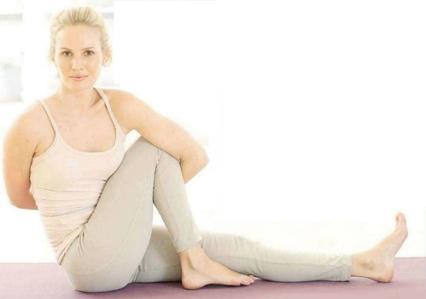The hips, buttocks, and thighs are regions of concern to many people, especially women. (Actually most men are also interested.) Many have been fighting the Battle of the Bulges for a long time.
Causes for excessive bulges, hips, buttock, and thighs
The problems of flabby hips, buttocks, and thighs, and of excessive bulges (such as saddlebags) and ugly puckering or marbling—the overabundance of fat—are not of concern just for those reaching middle age. It affects most females from their early teen years onward. Not only does each individual know that she (or he) is carrying extra weight in these areas, but everyone else knows, too. Even women who are slim complain about lumps on their outer thighs.
There are several reasons that women’s hips, buttocks, and thighs are affected more by these “maladies” than are men’s. The hormonal makeup of a woman dictates that:
- She carry a larger percentage of fat than a man does; and,
- The primary areas for fat storage on her body are the hips and thighs.
Another problem is inactivity. Most people do not exercise regularly, but women probably do less than men because of habits developed in childhood. Most females were traditionally taught that it was not feminine to run, to exercise, to sweat. Inactivity causes muscles to deteriorate and lose their tone and shape. We are very excited about the new interest girls and women are taking in athletics and general fitness. In the not too distant past, the most active girls seemed to be the cheerleaders, whose purpose was to encourage the boys to get their exercise. We are glad to see those days ending.
Many more girls are now staying active after leaving grammar school, the point at which many used to stop most of their deliberate physical activities – if they ever did any at all. It’s been a long time coming, and we are glad it’s here.
A third problem that affects more women than men, despite the increasing number of women who work outside the home, is the easy availability of food at home during the day. One of the authors is a full-time writer who works at home. He finds himself at the refrigerator or cupboard more often than he would like, usually out of boredom or frustration, when the right words just won’t come. Eating a snack or some junk food never does help find the proper word, but it does provide consolation. An active athletic life outside working hours, and the ability to resist (usually, at least) the siren call of unnecessary calories, may be all that prevents him from becoming a close imitation of the Goodyear blimp.
Three main factors then – hormones, inactivity, and easy access to food – dramatically affect not only the shape and size of a woman’s hips, buttocks, and thighs, but her entire body.
But despair not. There is hope. You—yes, you—can firm up and reduce that flab. Since we can’t do anything about the hormones that allow fat to deposit on the hips, thighs and buttocks, we must attack the problem by: (1) controlling diets to limit the amount of fat available for storage (and to eliminate some that has previously been stored); and, (2) exercising to restore muscle tone and consistency. Exercising can help work fat out of body tissue in specific areas. It gives the muscles a more solid look and feel. Exercise for hips, thighs, buttocks, are essential; it increases the body’s caloric expenditure, thus encouraging an overall fitness.

